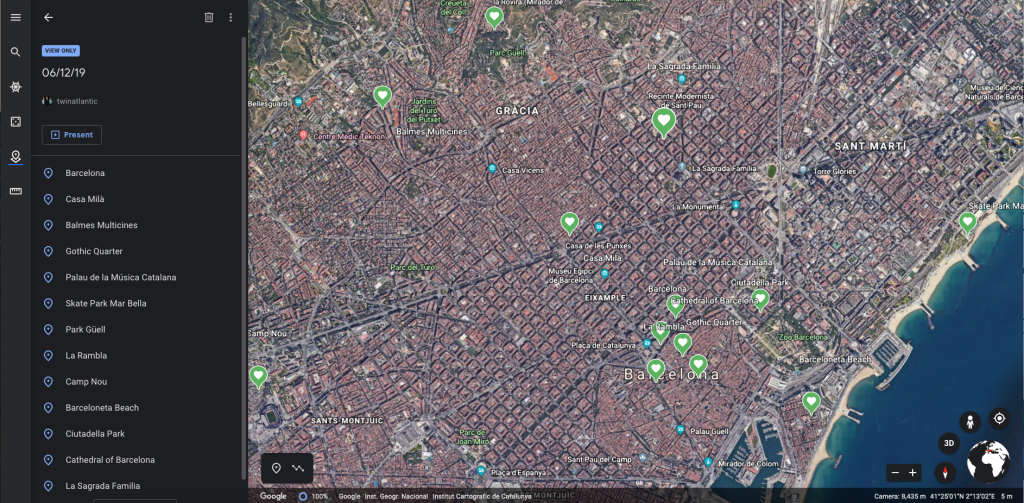
We are well used to acts using geolocation platforms such as Landmrk to host real and virtual treasure hunts for fans. They are an effective way, for a certain type of fanbase at least, to whip up excitement around a release or a tour.
A new feature, however, in Google Earth went live in mid November and offers a whole new twist on this. “With new creation tools now in Google Earth, you can turn our digital globe into your own storytelling canvas, and create a map or story about the places that matter to you… you can draw your own placemarks, lines and shapes, then attach your own custom text, images, and videos to these locations,” said product manager Gopal Shah in a blog post at the time. “The new tools are available on Google Earth’s web version, but the projects can be viewed on its mobile apps too. We think there is some interesting scope here for artists to tell stories using the new features: who’ll be the first to give it a try?” we asked in our November write-up of the announcement.
In early December, Twin Atlantic became the first musicians to make use of it in a marketing context for their single ‘Barcelona’. It involved populating the map of, you guessed it, Barcelona with a variety of items and exclusive content.
These included a pre-save link to the new track as well as handwritten lyrics, a seven-second YouTube clip of the song ahead of its full release, photos from the studio and little details about the song’s creation.
There was obviously delightful serendipity in having a single come out named after a city just as this Google Earth feature launched, but it is a simple use of what is on offer and the end result doesn’t feel forced. It is also an interesting way to push a pre-save for a track (rather than an album), using fragments of the song, the video and also the lyrics to pique fans’ interest ahead of its full release.
When a new platform or feature launches, there is a temptation for marketers to pounce on them for their novelty value and, as a means of justifying it all to themselves, making things unnecessarily complex or overegged. But here the use of Google Earth is simple and straightforward and all the more effective for that.